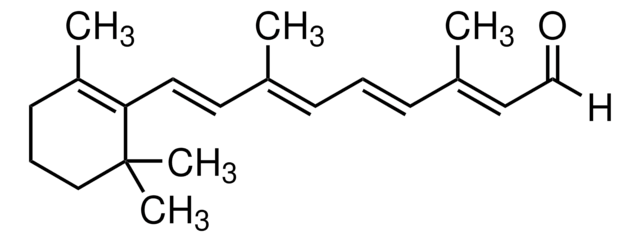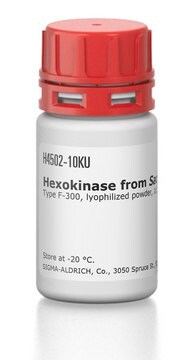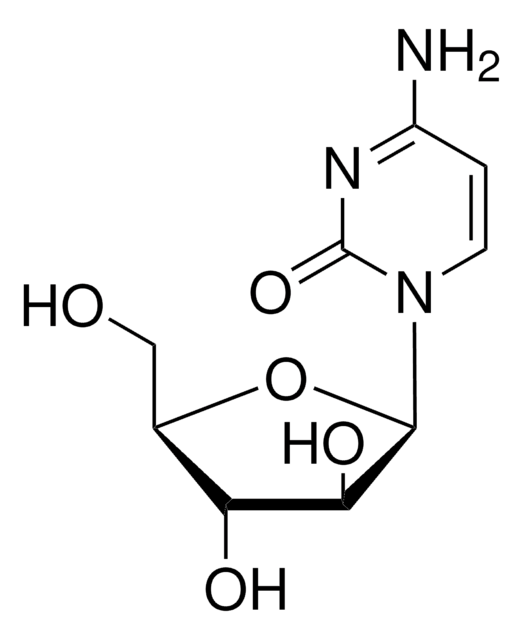H7779
Retinoic acid p-hydroxyanilide
≥95%
Synonyme(s) :
4-HPR, Fenretinide, N-(4-Hydroxyphenyl)retinamide
About This Item
Produits recommandés
Source biologique
synthetic (organic)
Niveau de qualité
Essai
≥95%
Forme
powder
Couleur
yellow to yellow-orange
Température de stockage
−20°C
Chaîne SMILES
CC1=C(\C=C\C(C)=C\C=C\C(C)=C\C(=O)Nc2ccc(O)cc2)C(C)(C)CCC1
InChI
1S/C26H33NO2/c1-19(11-16-24-21(3)10-7-17-26(24,4)5)8-6-9-20(2)18-25(29)27-22-12-14-23(28)15-13-22/h6,8-9,11-16,18,28H,7,10,17H2,1-5H3,(H,27,29)/b9-6+,16-11+,19-8+,20-18+
Clé InChI
AKJHMTWEGVYYSE-FXILSDISSA-N
Catégories apparentées
Description générale
Application
- as a synthetic retinoid to induce apoptosis in SEB-1 sebocytes
- as a medium supplement for C2C12 myoblasts to test its effect on ceramide formation
- to test in cytotoxicity in T-cell acute lymphoblastic leukemia (T-ALL)
Actions biochimiques/physiologiques
Mention d'avertissement
Danger
Mentions de danger
Classification des risques
Acute Tox. 4 Dermal - Acute Tox. 4 Inhalation - Acute Tox. 4 Oral - Eye Irrit. 2 - Repr. 1B - Skin Irrit. 2 - STOT SE 3
Organes cibles
Respiratory system
Code de la classe de stockage
6.1C - Combustible acute toxic Cat.3 / toxic compounds or compounds which causing chronic effects
Classe de danger pour l'eau (WGK)
WGK 3
Point d'éclair (°F)
Not applicable
Point d'éclair (°C)
Not applicable
Équipement de protection individuelle
Eyeshields, Gloves, type P3 (EN 143) respirator cartridges
Faites votre choix parmi les versions les plus récentes :
Déjà en possession de ce produit ?
Retrouvez la documentation relative aux produits que vous avez récemment achetés dans la Bibliothèque de documents.
Les clients ont également consulté
Articles
All-trans retinoic acid (RA, ATRA) is a pleiotropic activation factor that regulates genes associated with normal vertebrate cellular processes such as cell differentiation, cell proliferation, apoptosis, and embryonic development.
Notre équipe de scientifiques dispose d'une expérience dans tous les secteurs de la recherche, notamment en sciences de la vie, science des matériaux, synthèse chimique, chromatographie, analyse et dans de nombreux autres domaines..
Contacter notre Service technique












